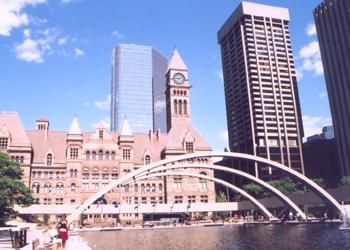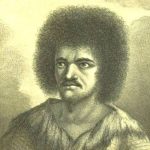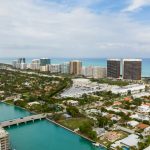
Among the many West Indian countries whose citizens emigrate each year, Jamaica is no exception. Most Jamaicans who leave the island and travel to Canada fine themselves settling in Montreal, Halifax or Toronto. The total number of Jamaicans in Canada has increased dramatically since the 1960’s and the reasons for coming are also different. Currently, Jamaicans who live in Canada can be found in every major Canadian city and occupy a multitude occupation.
The first group of Jamaicans in Canada
The first group of Jamaicans who came to Canada did so against their own will.
However, they stood firm on their convictions and refused to taken advantage of.According to James and walker (1984), West Indian slaves were imported into New France and Nova Scotia individually and in small numbers. However, the Maroons of Jamaica who entered Halifax in 1796 were the first large group to enter British North America (The Canadian Encyclopedia, 2000).
The name Maroons was used to describe slaves who ran away from their owners and created free communities away from the European settlements in Jamaica. A war between the Maroons and the British broke out on the island of Jamaica in 1795. The war ended when the British realizing that they could not win, tricked the Maroons into laying down their arms and then carried them into exile in Nova Scotia (James & Walker, 1984).
Governor John Wentworth settled the Maroons who numbered over 500 on the out skirts of Halifax and offered the men jobs to fortify the Citadel. Standing proud and still holding on to the memory of being betrayed by the British, the maroons mounted a strong resistance and refused to be compliant Nova Scotian settlers. After numerous appeals to London, the Maroons were allowed to return to Sierra Leone in West Africa in 1800. The “Maroon Bastion” stands on Citadel Hill as an example of their legacy and the sense of pride they contributed blacks remaining (James & Walker, 1984).
Between 1800 and 1920 small numbers of West Indians were brought from Jamaica as labourers for the Cape Breton mines and from Barbados to work in coal mines in Sydney and Nova Scotia. Migration from the West Indies almost virtually stopped after 1920. As a result, the West Indian population in 1941 was smaller than it was 20 years earlier. Even thought pressure for migration in the West Indies mounted, The Canadian government refused to allow any more non-whites into the country (James & Walker, 1984) (James & Walker, 1984).
Blacks were stereotyped as lazy, sexually over active, criminally inclined, and genetically programmed for inferior status. This belief was used to influence immigration policies, which excluded non-whites from entering Canada. In 1908, Robert Borden the leader of the Conservative Party stated. “The Conservative Party stands for a white Canada”. Not to lose face with voters, the Liberal government passed immigration that excluded non-whites, except when they were needed for cheap (slave) labour (James & Walker, 1984).
Jamaicans in Canada after World War II After World War II, a great demand for unskilled workers resulted in the National Act of 1948. This Act was design to attract cheap labourers over sea from British colonies. This resulted in many West Indians, including Jamaicans coming to Canada. The Jamaicans who entered Canada after World War II did so because they still believed it was an opportunity to escape poverty and seek a new start in a world where personal advancement and success seemed to be encouraged. Wanting to stop the in-flow of black West Indians, the Walter Act of 1952 was passed to impose a “severely restricted quota” on black West Indians entering the country (James & Walker, 1984).
In 1955 Canada introduced the West Indian Domestic Scheme (Anderson, 1993). This Scheme allowed eligible black women who were between the age of 18 to 35, in good health, no family ties and a minimum of a grade eight education from mainly Jamaica and Barbados to enter Canada (James & Walker, 1984). After one year as a domestic slave (servant), these women were given a landed immigrant status and were able to apply for citizenship after five years. Even though the Scheme originally allowed only 100 women per year, 2,690 women entered Canada from Jamaica and Barbados by 1965. In 1962, racial discrimination was taken out of the Canadian Immigration Act and the number of Jamaicans who came to Canada dramatically increased (Lazar & Dauglas, 1992).
Jamaicans in Canada after the 60s
Because changes in the Immigration Act allowed non-whites to enter Canada without restrictions, many Jamaicans took advantage of the opportunity and entered Canada with hopes of achieving their goals for a better life. After the purging many racist immigration policies, a large number of Jamaicans started to enter Canada as tourist and many would later apply independently for landed immigrant status (Anderson, 1993).In the late 60s, the Canadian government instituted the Family reunification clause in its immigration policy, which made it even easier for Jamaicans and other groups to bring their love ones to join them in Canada (Anderson, 1993). Thus, during the 70s and 80s most Jamaican who entered Canada were children and husbands of the many Jamaican women who came to Canada between 1955 and 1965.
According to Anderson (1993), Caribbean immigrants to Canada were more likely to
settle in large cities and their provinces of choice were Ontario and Quebec. The largest concentration of Jamaicans immigrants can be found in the following boroughs or Metropolitan Toronto: Scarborough, Toronto, North York, York and Mississauga. Other cities include Montreal, Edmonton, Vancouver, Winnipeg, Kitchener, Waterloo, Windsor and Halifax (The Canadian Encyclopedia, 2000).
In 1989 86.7% of Jamaican immigrants settled in Ontario, 7.4% settled in Quebec, 2.6% settled in Alberta, 1.1% settled in British Columbia, 1.7% settled in Manitoba and 0.6% settled in the rest of Canada. Jamaicans made up 27.5% of the total number of West Indian immigrants for that year (Anderson, 1993). Because of language concerns, most West Indian immigrants settle in Ontario as oppose to Quebec. In addition, Toronto is the largest city in Canada and is a magnet for West Indian immigrants (The Canadian Encyclopedia, 2000).
Jamaicans in Canada
Jamaica by far has been the major source of West Indian immigration to Canada since west Indians were allowed in Canada. Between 1974 and 1989, 35.7% of all West Indian immigration to Canada came from Jamaica. Nevertheless, there was a decline during the early 80s, a recovery during 1986 and a decline again by 1989 (Anderson, 1993). According to the Canadian Encyclopedia, Jamaicans made up 40% of West Indian immigration in the early 90s.
In a 1996 overview from Immigration Canada, Jamaica was ranked eighth in terms of the number of its citizens immigrating to Canada. Jamaica is preceded by countries such as China, Pakistan, and the Philippines in the number of its citizens that migrate to Canada. The number of Jamaicans immigrating to Canada declined in 1997 and again in 1998. Jamaican immigration to Canada is at an all time low; it is currently ranked number 10 by immigration Canada for the year 2000.
Jamaicans In Quebec
According to the Ministere des Affaires Internationales, de L’Immgration et des Communautes Culturelle et la Ville de Montreal, in 1995 there were 7345 Jamaicans living in Quebec, however, a more recent show that number to be much more. Between 1960 to 1970 28% of immigrants in Quebec were Jamaicans, during 1971 to 1980 there was a sharp increase to 41%, there was a significant drop to 12% between 1981 to 1985 and between 1986 to 1991 the number went up to 20%.
One possible reason for this drop between 1982 to 1985 might have been the language law Bill 101. Bill 101 was introduced by Quebec’s separatist government on August 26, 1977. This was an openly discriminatory law enacted by the Province’s first separatist government, which took away the right to freedom of speech from its citizens. Under the law, tighter restrictions on the use of English were introduced, as well as access to English schools. It became against the law to produce any commercial sign that wasn’t only in French, and the law aimed to make French the language of the workplace (O’Malley & Bowman, 2001).
Of the total number of Jamaicans living in Quebec, only 20% can speak French and 86% practice Christianity as their religion. One percent of the populations have no schooling, 13% have a primary education, 45% have high school education, 25% have a college education, and only 16 have a university education (Ministere des Affaires Internationales, de L’Immgration et des Communautes Culturelle et la Ville de Montreal, 1995).
Employment In 1995, 68% of the Jamaican population in Quebec was members of the work force. Most Jamaicans work in the Health and social service sector (25%). 21% work in the manufacturing industry, 13% work in repair and construction, 15% are office and clerical workers, and 7% work in management (Ministere des Affaires Internationales, de L’Immgration et des Communautes Culturelle et la Ville de Montreal, 1995). It is a fact that West Indian immigrants generally have a high level of skill, education, work ethics, and experience. Today, they can be found in every category of occupation (The Canadian Encyclopedia, 2000).
Male/female ratio Fifty nine (59%) of the Jamaican population in Quebec in 1995 was female and 41% was male. 38% 0f the women are employed, where as, 30% of the men are employed (Ministere des Affaires Internationales, de L’Immgration et des Communautes Culturelle et la Ville de Montreal, 1995). Most Health and social service workers are Jamaican females.
Family
In the Jamaican community, the nuclear family (one or two generation living in the same house) is part an extended family group spread over several North American cities. However, ties are almost always maintained with family and friends back home (The Canadian Encyclopedia, 2000).
Material culture: Food: A spicy, colourful mix of cuisine includes ackee and saltfish, rice and peas, jerk chicken, fish and pork, curried goat, pepperpot soup, roasted yams, banana fritters, patties, salads, fruits and exotic desserts. Beverages include carrot juice, ginger beer, almost all kinds of fruit juices, coconut water and sorrel.
Arts and crafts: Creations in straw, clay, fabric, shell, wood and semi-precious stone are on display in most Jamaican homes. African, Indian, European and Arawak cultures influence Jamaicans Arts and Crafts. Depicting life and landscape, Jamaican paintings feature bright colours and bold lines. No Jamaican kitchen is complete without a dutchy (a cast iron pot). Dutchys come in different sizes and it is said that, “the blacker the dutchy, the sweeter it cooks”.
Theater: From the 19th-century Ward Theater to innovative little theaters and thriving centers for drama in Kingston, Jamaicans like a broad range of theatrical treats. Plays depict a variety of Jamaican experiences.
Sports and Games: One could argue that the national game is domino followed by ludy. Sports of choice include Cricket, soccer (the reggae boys), bicycle racing, water-sports, horse racing, rafting, and track and field.
Non-material culture:
Music: The country’s music consists of folk ballads, work songs, revivalist hymns, and of course, reggae. Reggae music originated in the ghettos of Kingston during the 60s, and is a blend of African musical traditions and rhythm and blues.
Religion: Christianity, in its various denominations is the religion of the vast majority of Jamaicans. There are, however, other religions observed and practiced in the culture by a relatively smaller numbers of people, such as Rastafarianism, Islam, Judaism, and Hinduism. From 1930 until the mid ’60s, Rastafarianism was a local Jamaican religious movement with few outside influences. Nevertheless, Jamaican immigrants brought Rastafarianism to Canada in 1933 (The Canadian Encyclopaedia, 2000).
Customs: The people of Jamaica have emerged from a historical process in which peoples of all the continents were brought together within a well-defined social hierarchy. Thus, Jamaican culture is a particular synthesis of many different groups. As a result theme is “out of many, one people”. Popular culture is heavily influenced by the African heritage, while formal behaviour is unmistakably British in style. To illustrate, in the article for the Montreal Gazette Called Pigment matters in Montreal: Survey (October 26, 2001) McGill professor Jim Torczyner points out that in the 1996 government census when blacks were about their ethnicity Jamaicans commonly answered that they were British.
Language: While it is arguable that the popular speech of Jamaicans is a distinct language from English, it is derived from English along with the many different African dialects used by slaves at that time. Patois is the common dialect of the Jamaican people. The slaves developed it as a means to communicate without the slave masters understanding their discourse. However, English has been the official language for over 300 years.
Celebrations: Jamaicans celebrate carnival that is held the beginning of July each year, Jamaica day, which is July 18th, and Independence Day (1962), which is celebrated on August 6th.
Conclusion
The Maroons were the first Jamaicans who came to Canada, however, they did so against their own will. Nevertheless, they stood firm on their convictions and refused to taken advantage of. Between 1800 and 1920 small numbers of West Indians were brought from Jamaica for labourers for the Cape Breton mines. Stereotypes against blacks influenced immigration laws, making impossible for them to immigrate to Canada.
The Jamaicans who entered Canada after World War II did so because they still believed it was an opportunity to escape poverty and seek a new start in a world where personal advancement and success seemed to be encouraged. Also, there was a great demand for cheap unskilled workers. Even though the Domestic Scheme of 1955 allowed only 100 women per year into Canada, 2,690 women entered Canada from Jamaica and Barbados by 1965. The institution of the family reunification act made it possible for Jamaicans living in Canada to send for their family members.
Jamaica by far has been the major source of West Indian immigration to Canada. The largest concentration of Jamaicans immigrants can be found in Ontario. Bill 101 might have caused the drop in the number of Jamaicans in Quebec between 1981 to 1985. Females make up the majority of the Jamaican population in Canada. Elements of Jamaican material culture include Food, Theater sports and games. On the other hand elements of non-material culture includes reggae music, religious practices, language and customs.





